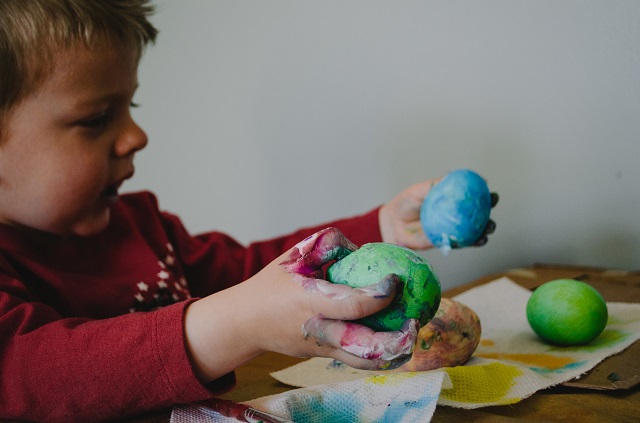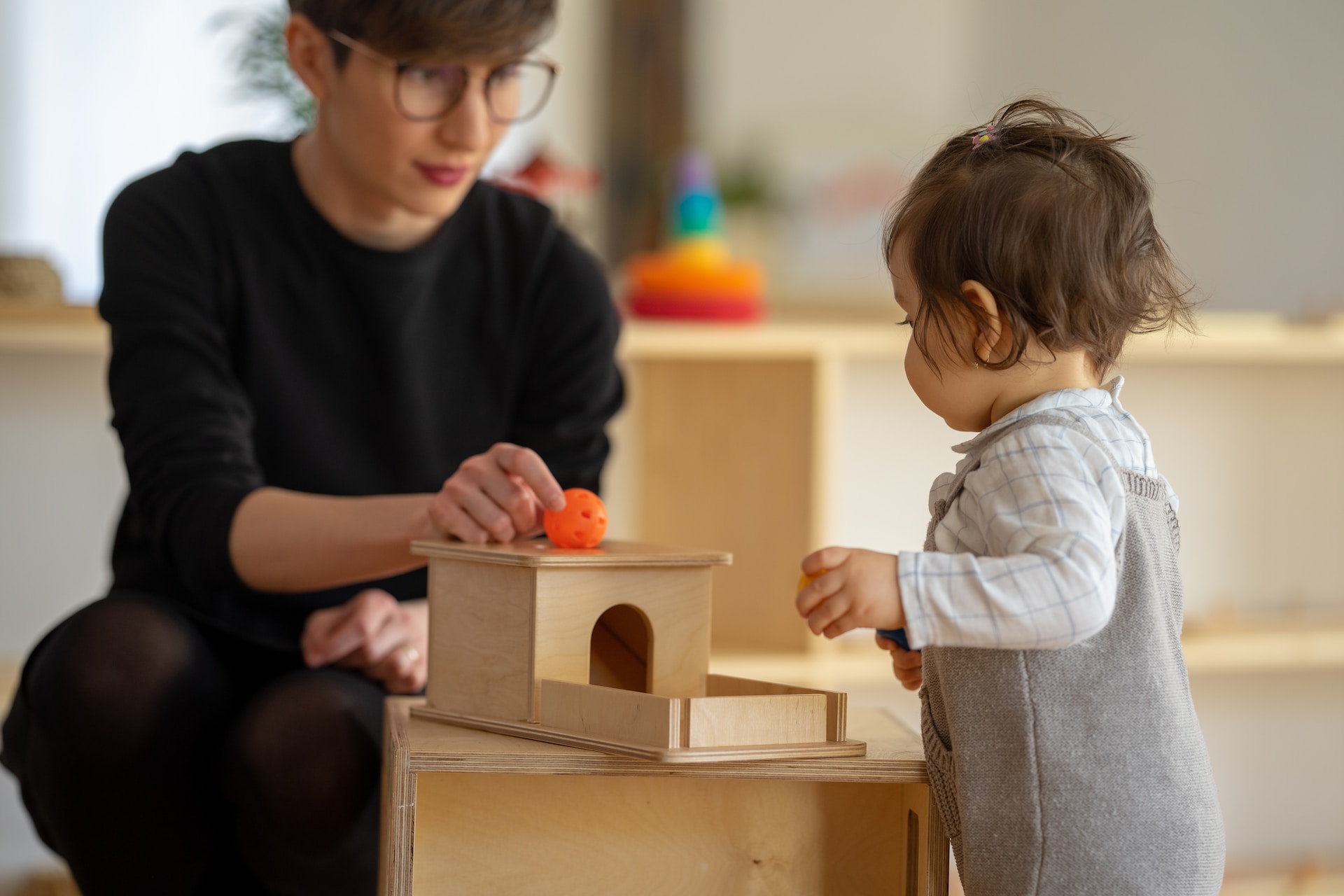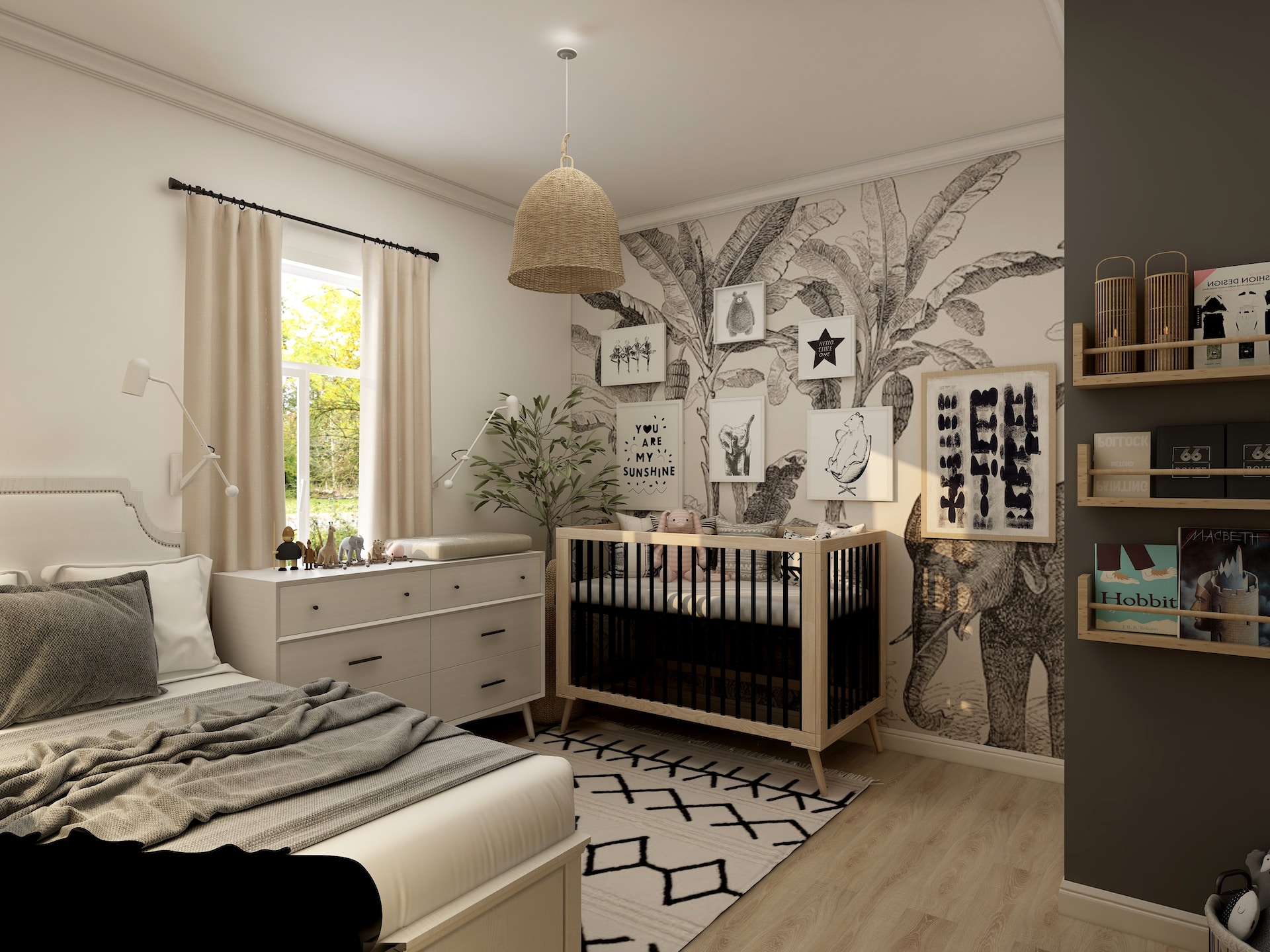Growing children rely on their senses from birth onward to explore and make sense of their surrounding world. Through sight, hearing, touching, tasting, smelling, and even moving, young children process the information obtained through their senses, which informs their development. By enriching infant’s and young children’s experiences with sensory play activities, families can support their little one’s brain development.
Sensory play can take many forms. Parents can use household items or DIY toys to encourage toddlers to understand better and navigate their world. The different forms of sensory play can enhance brain development in many ways, which we’ll explore here. Learn how to engage your child with fun sensory development activities so that you can spur their development and nurture their well-being.
What Is Sensory Play?

Sensory play refers to virtually any activity that can stimulate a child’s senses. It might involve splashing their hands during bathtime or touching the different textures featured in a “touch and feel” book. Children typically find these types of activities fun without knowing that the sensory information they obtain from these activities helps forge stronger connections in their brains to process and respond to sensory stimulation.
Sensory play helps children create a context for their sounds or the textures they come into contact with. They learn what the different sounds are and how to respond or not respond to them. For instance, when a car horn blares outside the home, a toddler might cry the first time they are disturbed by it. But after processing it and realizing this sound does not impede or impact them personally, they may learn to ignore it.
Linked to healthy childhood development, sensory play helps introduce children to their world in a safe, fun-filled environment. As kids develop an awareness of different sensations, they may become more excited to build on their developing knowledge base and better explore their surroundings through more playtime fun.
Benefits of Sensory Play for Brain Development
By engaging in sensory play with your young children, you can better prepare them for the world. During their initial years of life, children’s brains grow quite rapidly. Parents can support this healthy development by helping children safely explore their world through each of their senses. Some of the key benefits your child is likely to experience through sensory play include:
Development of Fine and Gross Motor Skills
As we know, children aren’t born with command over their motor skills. It takes time and practice to develop them. Learning how to manipulate their fingers and hands, use their arms for throwing, and their fingers for properly holding a pencil requires practice. The better developed your child’s fine and gross motor skills, the better they’ll be prepared for school or even enjoy playing at the park or with their toys more fully.
Problem-Solving Skills
Life is filled with problems and challenges for humans of all ages. Solving them is integral to the human experience. Through play, toddlers can practice interpreting the world using their senses to solve small challenges such as building a block tower that doesn’t fall or sorting items with different shapes or colors. As they develop a knack for solving minor problems, they enhance their ability to solve problems of great difficulty.
Social Interaction
Sensory activities can help children develop essential social interaction skills such as making eye contact, reading emotions in faces, or listening to others. By developing strong social skills, children may interact more comfortably and successfully with other children.
Language Development
Language development happens gradually, but the more caregivers can promote this development, the better their child’s language skills. Good language skills will allow kids to communicate more effectively as they age. Sensory exploration has a significant impact on language and speaking domains of child development. Receptive and expressive language are some of the areas of language development that can be worked upon when a child engages in Sensory play. You can help your toddler using fun descriptive words while playing to introduce new vocabulary and promote sentence formation. Pretend play can really improve your child’s expressive language skills and verbal expression
What Is Sensory Processing Disorder?
Sensory processing disorder (SPD) refers to a condition that affects stimuli processing. Children affected by SPD are often susceptible to stimuli, but SPD can have the opposite effect, too; children may require a more significant amount of a particular stimulus before responding to it. SPD can affect many or even just one sense. While adults can have this disorder, they don’t usually exhibit symptoms as they’ve learned how to cope with them.
Most often, SPD is a condition seen in children. Some specialists view SPD as a singular condition that can occur independently, while other researchers believe it is more often than not a condition associated with other conditions such as autism spectrum disorder or attention deficit hyperactivity disorder.
Symptoms of SPD may include:
- Exhibiting poor balance, coordination, or clumsiness
- Finding sounds to be too loud
- Finding lighting to be too bright
- Bothered to the point of gagging by certain food textures
- Feeling that clothing items are too scratchy
- Becoming upset by sudden movements, touches, or loud noises
Although there is no known way to prevent SPD, it is manageable. However, it typically takes time and considerable therapy to help children develop coping strategies to live with this condition. Doctors may recommend sensory integration therapy, occupational therapy, or a sensory diet, which consists of tailored activities that are chosen for a child based on their sensory needs.
DISCLAIMER: These tips are based on the personal experience of the writer and are not meant to replace the advice of your healthcare professional. For questions or concerns, please talk to your licensed healthcare provider.
How Sensory Play Can Prevent Picky Eating in Children

Many children have food aversions based on the textures of foods. This is common among children with SPD, but any child may develop a picky eating habit. Sensory play can reduce the tendency for picky eating, helping kids enjoy healthy eating habits. Often the sense of taste is indeed the deciding factor for whether or not a child will want to eat certain foods, but have you ever witnessed a child refuse to eat something because of the way it looked before they’ve ever tasted it?
Through sensory play activities, parents can prevent kids from deciding whether or not they will eat a food merely based on its texture or appearance. Food texture aversion can be highly frustrating for both parents and kids. To help your children enjoy exploring new food textures and tastes, you may want to let them enjoy activities like helping you to cook. Their little hands can help form meatballs. You might even let them ‘paint’ with some spices, so they get used to seeing and smelling them. By spending time with ‘food’ in a positive context, they can become more comfortable with different textures and appearances.
Creating a Designated Sensory Play Space at Home

Parents can create a space indoors and outdoors for sensory play. Consider outfitting your indoor play space with items such as:
- Busy boards (toys with knobs, dials, buttons, etc.)
- Touch and feel books
- Simple puzzles
- Play-Doh
- Building blocks
- Bristle blocks
- Fidget cubes
- Sensory table
- Sensory bins
When designing your outdoor sensory play area, you might include a:
- Swing
- Slide
- Sandbox
- Toddler gardening ‘tools’
- Baby pool
- Colorful sidewalk chalk
- T-ball set
Of course, parents can supervise children in all kinds of ways to explore their world safely. They use many different household items to engage in sensory play. However, always be careful when using small objects with your little ones as they can be choking hazards. And, always, supervise your child around water.
5 Sensory Play Activities Using Things You Already Have at Home

You may not realize it, but your home is full of a wealth of sensory items that you can feature during sensory playtime with your toddler. Here are just a few to inspire you to get started with sensory play:
Pasta Pictures
Pasta comes in all kinds of fun shapes and sizes. All you need are some different pasta shapes such as macaroni, cavatappi, rotini, and some construction paper and non-toxic paste. Encourage your child to paste the pasta to create pictures like a circle, a square, or even more complicated items that you trace for them like a star or a heart.
Salt Dough Ornaments
Don’t have Play-Doh? No problem. Using a combination of flour, water, and salt, you can whip up a batch of salt dough to create fun seasonal ornaments. Children will enjoy squishing the dough, rolling it, and forming it into shapes using their hands or cookie cutters. After you bake the ornaments so they’ll harden, you and your children can paint and decorate them with small pom poms, ribbon, or other odds and ends.
Sensory Bin
Create a sensory bin with different items and leave it out for daily stimulation. Provide plastic measuring cups and other tools for children to touch and explore on their own. You can swap in new items to keep them interesting. Here are some examples:
- Dry beans
- Edible sand
- Little toys
- Rice
- Cotton balls
- Shredded pieces of paper
Tea Party
Unless you’re having high tea with the queen, you don’t need a formal tea service to have a tea party. Plastic cups, some water, and a plate filled with cookies or apple slices will do just fine. The key is to let your child do the hosting. That means it’s their job to fill and refill your glass with ‘tea.’ It’s their job to serve your cookie.
Pots and Pans Band
Pots and pans, of course, make great drums. But there are many items around your house that children can use to make sounds. You can hand them a couple of spoons and allow them to make ‘music’ on the kitchen floor using items like pots, plastic colanders, boxes, and more.
Keep these ideas in mind as you prepare to engage your child in sensory play. One of the highlights of sensory play that we haven’t yet mentioned, of course, is all the fun you can have as you bond over these different activities. You’re sure to create some fabulous memories, so keep your camera handy!




